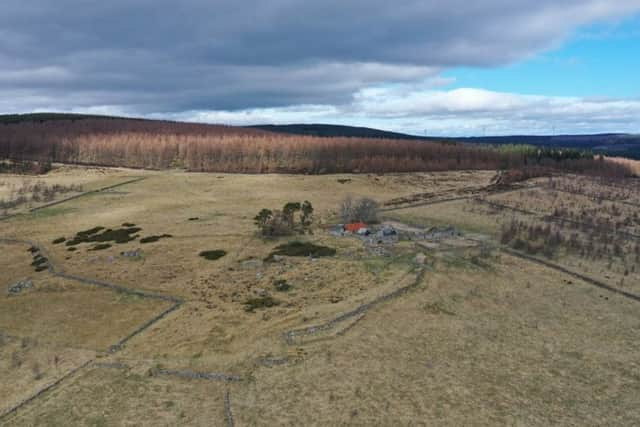Secrets of whisky smuggling country to be revealed at site of ancient distillery
This article contains affiliate links. We may earn a small commission on items purchased through this article, but that does not affect our editorial judgement.
An excavation is underway at Blackmiddens on the Moray and Aberdeenshire border in an area known as Cabrach where illegal distilling was rife.
Blackmiddens was producing litres of illegal alcohol during the 18th Century with tales of whisky being smuggled into Aberdeen in coffins by gangs of freebooters.


Advertisement
Hide AdAdvertisement
Hide AdIn 1825, the farm went legitimate and took up one of the first licences which allowed it to distil whisk within the law.
Now, the secrets of Cabrach, where residents mixed farming and distilling with great skill to create a network of stills and distribution, are due to be revealed after archaeologists moved onto the site.
It is hoped that the history of this pivotal period in whisky production, which has arguably led to Scotch whisky’s global success story, will be unearthed by the excavation.
Joan Harvey, 66, whose great, great uncle James Sharp was the tenant farmer at Blackmiddens, has welcomed the excavation which is being led by the Cabrach Trust with the support of Historic Environment Scotland and Forestry and Land Scotland.
She said: “I was always told that my great, great uncle was the head of the gang at the time. We were the ‘freebooters’ who took the whisky to Aberdeen to sell in the pubs. Stories about their adventures were passed down my family.
“Apparently my great, great grandfather had a white stallion and when the excisemen were billeted locally he would ride his white horse, alerting everyone that the excisemen were there so that the whisky smugglers could go to ground.
“I was also told that, one time, the excisemen were trying to catch the smugglers and had set up barricades all around Aberdeen.
“My great, great uncle hired a horse-drawn hearse and loaded the coffin with whisky.
Advertisement
Hide AdAdvertisement
Hide Ad“When he reached the excisemen, they all took off their hats as a mark of respect for the dead, and the whisky went through.”
Anna Brennand, chief executive of the Cabrach Trust, which hopes to develop a working historical distillery and heritage centre to tell the story of illicit whisky distilling and smuggling, said:“The Cabrach is a place of many secrets.
“For decades local farmers secretly distilled whisky and smuggled it away under the noses of excisemen.
“We hope to uncover some of the secrets of early whisky making in the Highlands with this exciting dig.”
The dig is thought to be the first excavation of a traditional small-scale farm distillery.
Blackmiddens was granted one of the first whisky production licences following the Excise Act of 1823 which effectively formalised the small-scale distilling of whisky and moved it out of the black market
The farm would have had a small 40 gallon (180 litre) still compared to whisky stills today which hold many thousands of litres.
However, despite the fact that farms like this were famous for their fine quality spirit, whisky production at Blackmiddens stopped just eight years after it began and the farm fell into ruin.
Advertisement
Hide AdAdvertisement
Hide AdBlackmiddens forms part of Scotland’s national forest estate, and is managed by Forestry and Land Scotland (formerly Forestry Commission Scotland).
National Environment Advisor Matt Ritchie said:“The hidden history of Blackmiddens is fascinating, and we are delighted to support the Cabrach Trust in their investigations.
“Illicit whisky stills can be found throughout the Highlands but they were particularly common in the Cabrach.
“They are difficult to spot, but once you know what you are looking for, you can find them tucked away next to burns in the hills.
“When the Excise Act changed in 1823 and smaller distilleries became legal, the illicit distillers came down off the hills and set up in farmsteads like Blackmiddens. Consequently, the nondescript buildings can be much harder to identify, and this is what makes this first ever dig so exciting”.
John Sherriff, manager of the Archaeological Survey Team at Historic Environment Scotland, said:
“Blackmiddens Distillery played a short but significant role in the history of whisky-making in the North East of Scotland and, by surveying the site, we are delighted to support the Cabrach Trust in its research.
“The survey will record the character and extent of the visible remains and explore the relationship between the distillery and the adjacent farm steading.”
